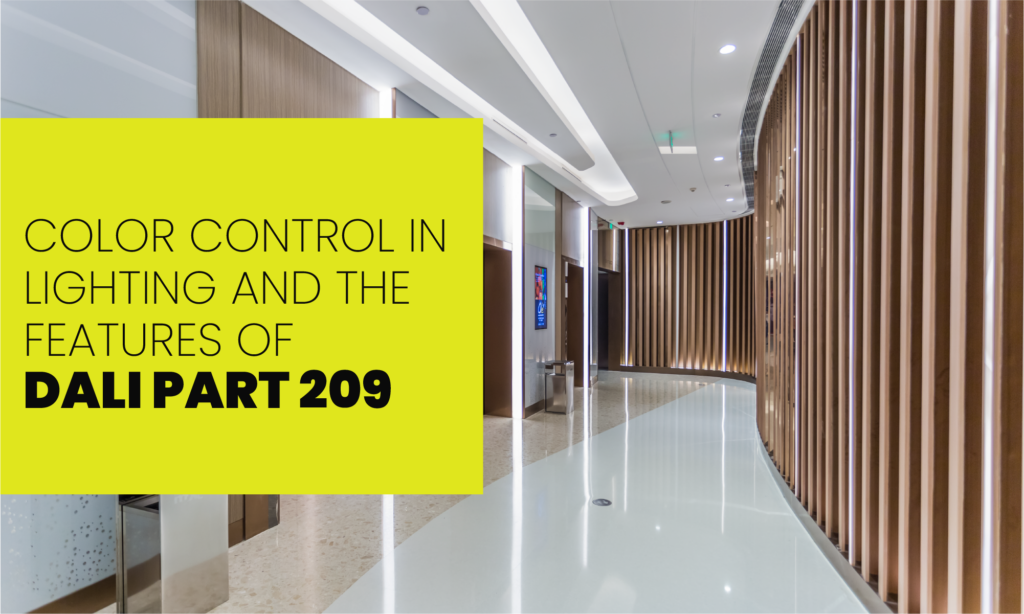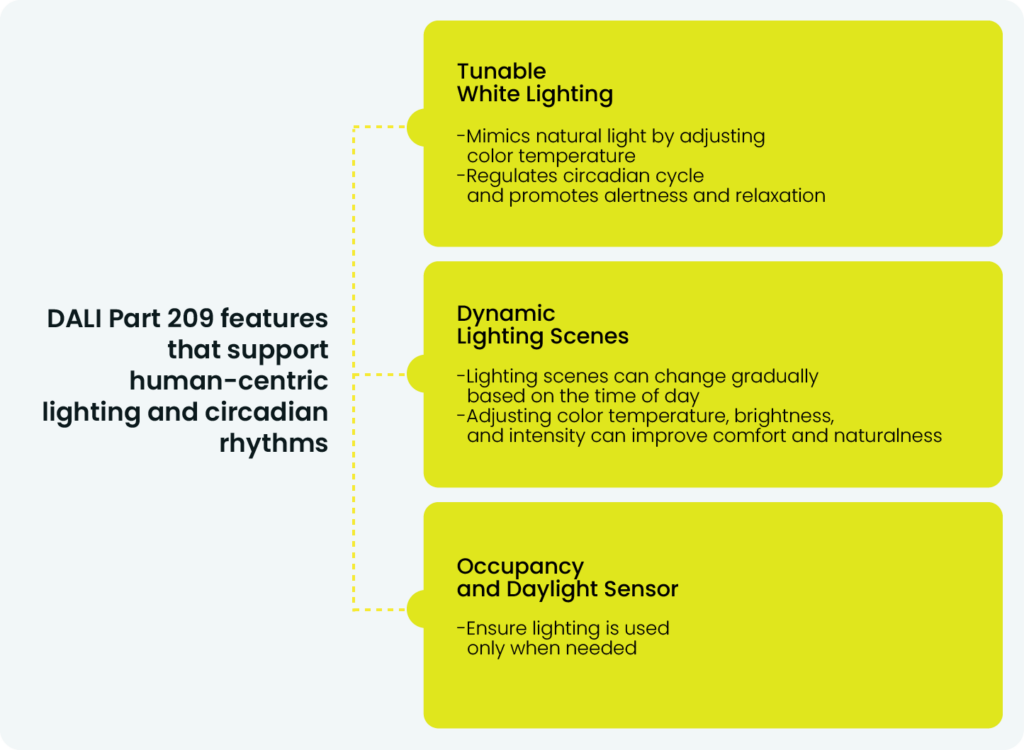Exploring DALI Part 209: Mastering Color Control for Innovative Lighting Control Solution

With the power to transform the look and feel of a space, color control plays a vital role in lighting design. The right color scheme can create an atmosphere that inspires and motivates people. And with the advent of DALI Part 209, the possibilities of color control have multiplied manifold.
In this blog post, we will uncover the importance of color control and how it can impact the aesthetics, well-being, and productivity of occupants. We will closely examine the ground-breaking DALI Part 209, delving into its functionality and exploring the numerous benefits it provides.
What is color control in lighting?
Color control in lighting involves regulating the color temperature and hue of light to achieve a specific ambiance and surroundings. The application of color control can be made possible by multiple lighting technologies and systems, including LED lights that offer adjustable color temperature or advanced lighting control systems such as DALI Part 209. The objective of color control is to elevate the visual aesthetics of a space and establish a pleasant, efficient, and welcoming environment for its inhabitants.
What is Tunable White lighting?
In addition to color temperature, there are several other lighting technologies that can be used to control color output, including RGB (Red, Green, Blue) lighting, RGBA (Red, Green, Blue, Amber) lighting, and tunable white lighting.
Tunable white lighting allows users to adjust the color temperature of the light output, usually by varying the intensity of cool white and warm white LEDs. It is perfect for spaces where the lighting needs to be adjusted according to the time of day, such as hospitals, offices, and schools.
How does DALI Part 209 work?
At its core, DALI Part 209 works by defining a set of commands and protocols that can be used to communicate color information between DALI devices. These commands and protocols include:
- Color Temperature Control: This command is used to set the color temperature of a light fixture, which determines the perceived warmth or coolness of the light output. By adjusting the color temperature, users can create a wide range of lighting effects and moods.
- Device Management: DALI Part 209 also includes protocols for managing devices within a DALI system, including discovering and identifying devices, setting device addresses, and configuring device parameters.
- Color Point Control: This command is used to set the color point of a light fixture, which is defined by its x, and y coordinates on the CIE chromaticity diagram. By setting the color point, users can control the hue and saturation of the light output.
By using these commands and protocols, DALI Part 209 allows for precise and consistent color control across different lighting fixtures within a DALI system. It also provides greater flexibility and scalability, as new devices and technologies can be added to the system without disrupting the color control framework.
How do DALI Part 209 support human-centric lighting and circadian rhythms?
DALI Part 209 standard defines how lighting control systems can be designed to support human-centric lighting and circadian rhythms. DALI Part 209 includes several features that enable lighting systems to endorse human-centric lighting and circadian rhythms. These features are as follows:
- Tunable white lighting, allowed by DALI Part 209, mimics natural light by changing color temperature throughout the day. This regulates the circadian cycle and promotes daytime alertness and evening relaxation.
- DALI Part 209 supports occupancy and daylight sensors, which reduce energy usage and ensure lighting is only used when needed.
- DALI Part 209 also lets you make dynamic lighting scenes that can be set to change at different times of the day. This can be done by gradually changing the light’s color temperature or adjusting the light’s brightness and intensity to make the room feel more natural and comfortable.

Final Thought
Color control is a crucial aspect of lighting design that can significantly impact the atmosphere, productivity, and well-being of building occupants. DALI Part 209 is a game-changing advancement in lighting design and control, providing a standardized framework for color control in DALI systems. It enables tunable white lighting that adjusts color temperature throughout the day, regulating the circadian cycle for alertness during the day and relaxation at night.
DALI Part 209 provides precise and consistent color control across different lighting fixtures, enabling the creation of dynamic lighting scenes that support human-centric lighting and circadian rhythms. It also supports occupancy and daylight sensors, reducing energy usage.
Looking to explore more about DALI Part 209? Contact our team.